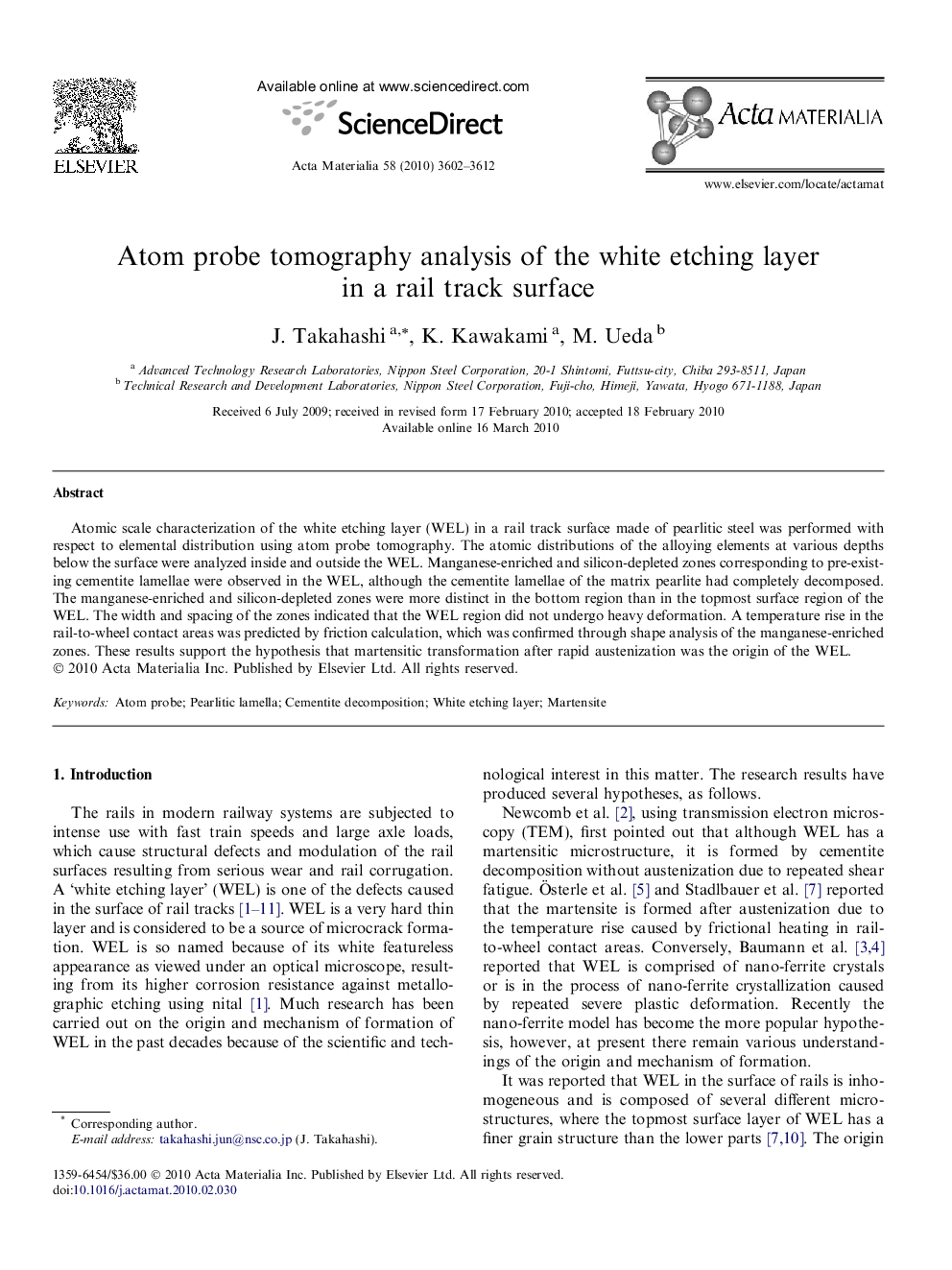| Article ID | Journal | Published Year | Pages | File Type |
|---|---|---|---|---|
| 1448743 | Acta Materialia | 2010 | 11 Pages |
Atomic scale characterization of the white etching layer (WEL) in a rail track surface made of pearlitic steel was performed with respect to elemental distribution using atom probe tomography. The atomic distributions of the alloying elements at various depths below the surface were analyzed inside and outside the WEL. Manganese-enriched and silicon-depleted zones corresponding to pre-existing cementite lamellae were observed in the WEL, although the cementite lamellae of the matrix pearlite had completely decomposed. The manganese-enriched and silicon-depleted zones were more distinct in the bottom region than in the topmost surface region of the WEL. The width and spacing of the zones indicated that the WEL region did not undergo heavy deformation. A temperature rise in the rail-to-wheel contact areas was predicted by friction calculation, which was confirmed through shape analysis of the manganese-enriched zones. These results support the hypothesis that martensitic transformation after rapid austenization was the origin of the WEL.
